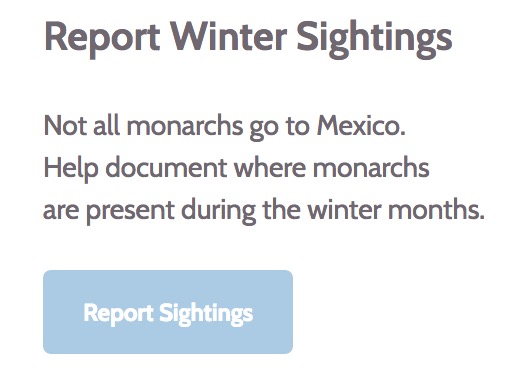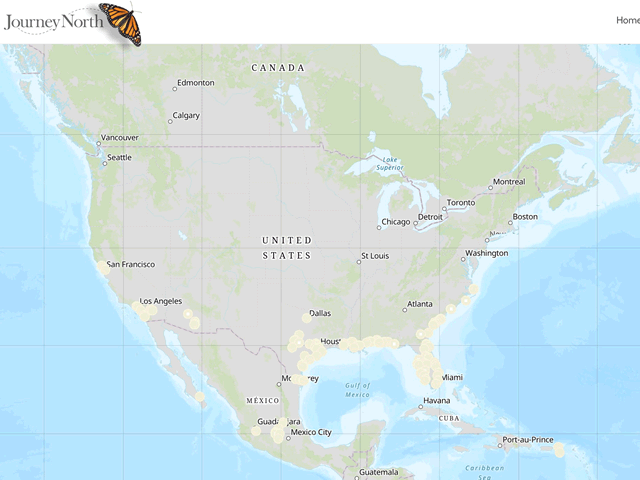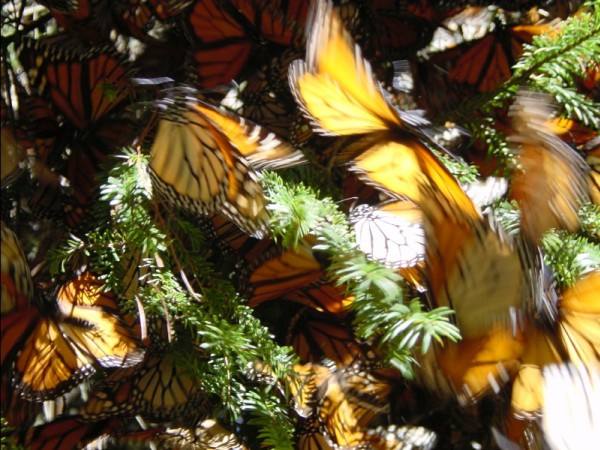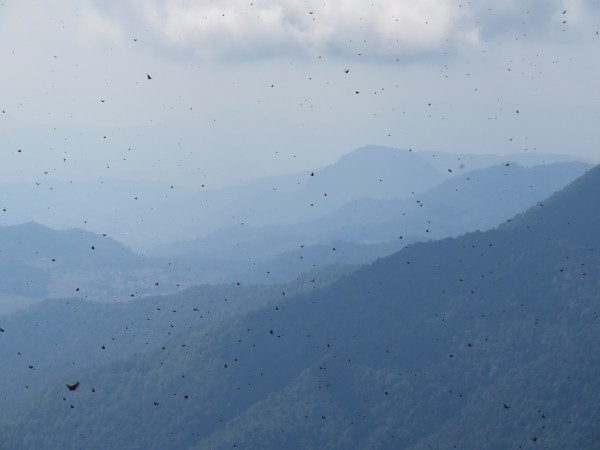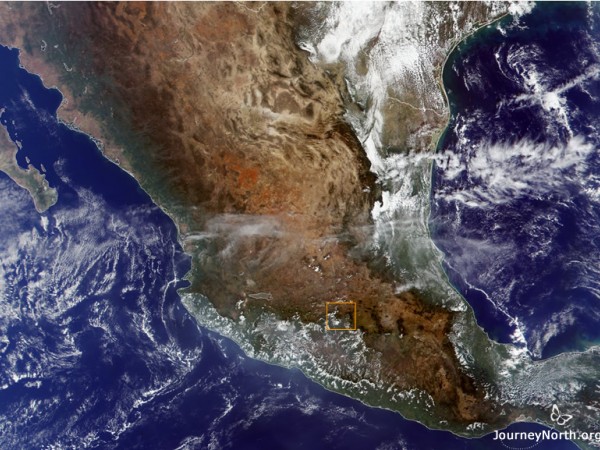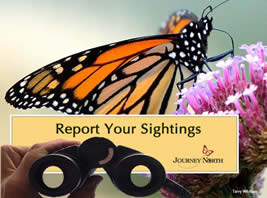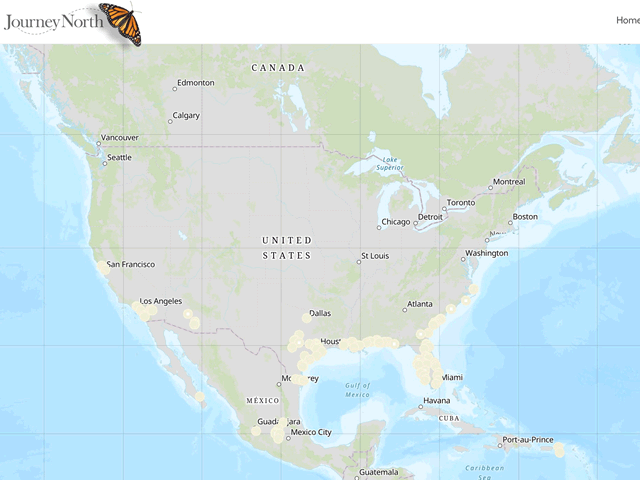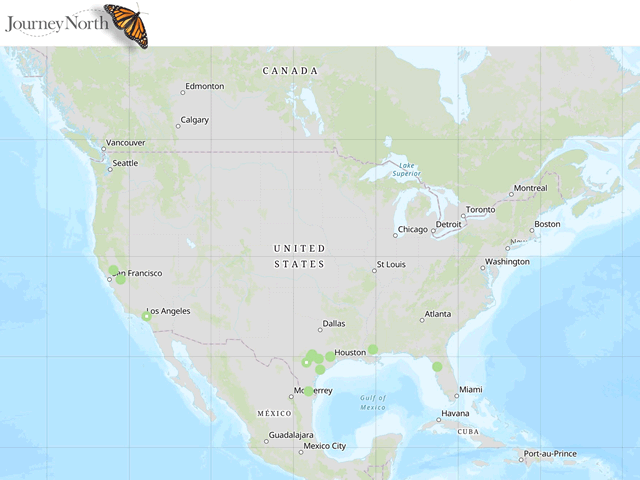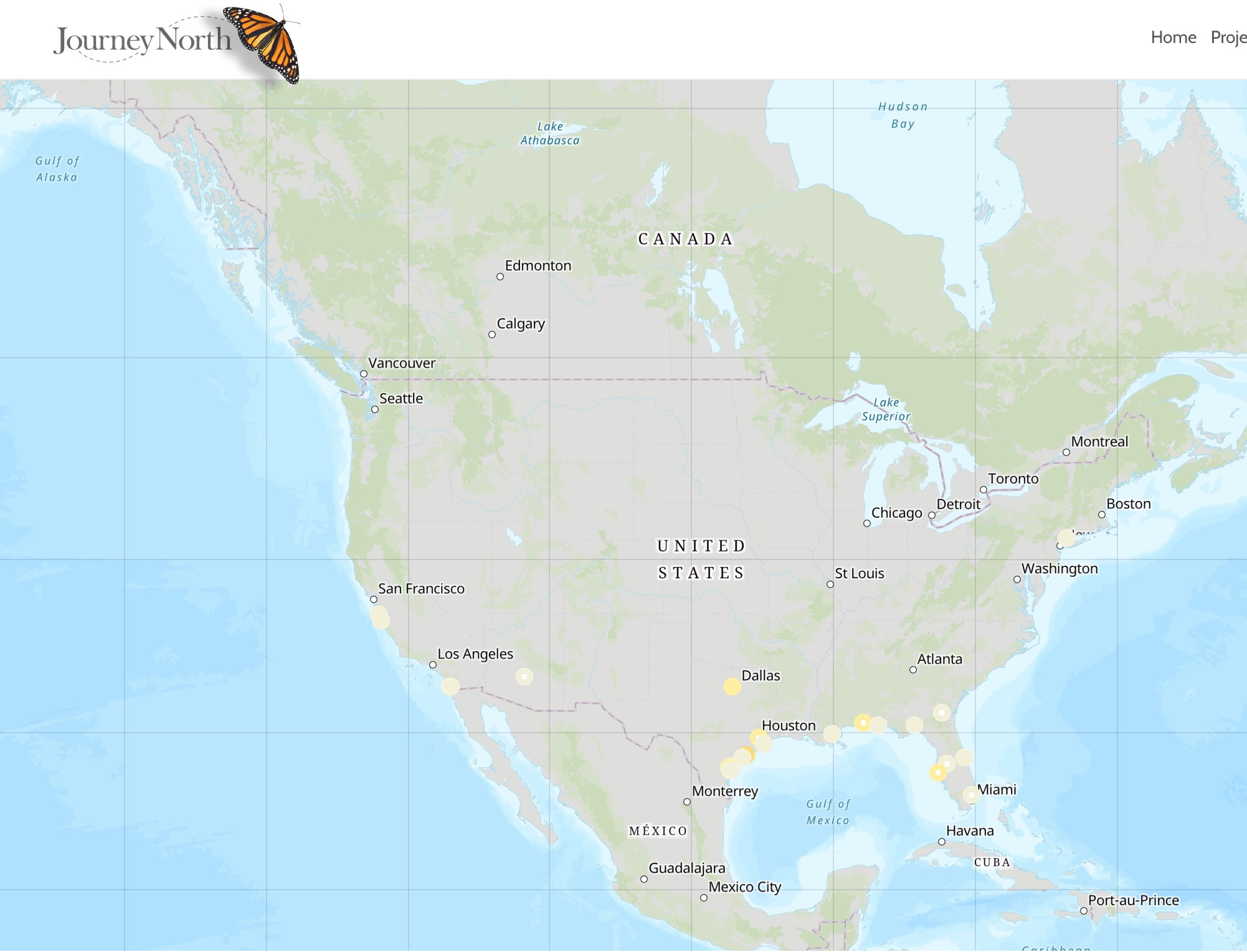El Rosario Sanctuary, Simply Magical
Experiencing the indescribable sound of millions of monarch wings beating.
Temperatures Rising
It's mid-February now and temperatures are starting to rise at the overwintering sites. Monarchs have survived the coldest part of the winter season. There have been some indications that monarchs are becoming more active and starting to move north.
Journey North has received this message from Rocoio Trevino, Coordinadora, Programa Correo Real, Profauna A.C. on 02/19/2020.
Estimados amigos de Journey North, Desde el domingo he estado recibiendo del paso de una a cuatro monarcas, por el estado de Guanajuato. Hoy recibí el siguiente. As Gilberto Ruiz Parra reports, "Desde las dos de la tarde hasta las 17:00 horas he estado viendo el paso de las monarcas (1 por minuto) en la comunidad de Moncloa, en la Sierra de los Agustinos en el municipio de Acámbaro Guanajuato. Volando bajo." (18 de febrero 2020) El lugar del que reportan queda como a 60 kilómetros de la RBMM...Creo que con esto iniciamos la temporada de migración primavera 2020. Aún no publican los datos oficiales del monitoreo de las colonias, tal vez hasta fines de mes. Saludos y seguiremos en contacto.
[Translation: Dear friends of Journey North, Since Sunday I have received emails regarding the movement of one to four monarchs, through the state of Guanajuato.Today I received the following. As Gilberto Ruiz Parra reports, "From two in the afternoon until 5:00 pm I have been watching the passage of the monarchs (1 per minute) in the community of Moncloa, in the Sierra de los Agustinos in the municipality of Acámbaro Guanajuato. Flying low." (February 18, 2020) The place they report is about 60 kilometers from the MBR ... I think that this is the beginning of the spring 2020 migration season. They have not yet published the official colony monitoring data, maybe until the end of the month. Greetings and we will keep in touch.]
As Estela Romero notes in her letter, this early movement of monarchs causes some concern among Sanctuary guides.
Letter From Estela Romero
Dear friends,
Last week, the weather was cold and rainy. It almost felt like it would snow. This week is totally different. The weather has been amazingly bright and sunny with temperatures around 25 Centigrade. The three Sanctuaries of Sierra Chincua, Cerro Pelón and El Rosario seems to have reached peak season. As María del Rosario, a teen Sanctuary guide, remarked: “The warm days are coming all of a sudden and Monarchs seem to be very restless.”
The numbers of visitors, both foreign and local, at each Sanctuary have been remarkable, even the parking and hotels have been full on the weekends. Queues for horses to travel to the Sanctuaries have been long.
However, weekdays tend to be quieter and perfect for observing birds, especially hummingbirds. Pollinator experts, professional photographers and researchers all take advantage of the quiet weekdays to visit the Sanctuaries.
The colony has turned dense at the El Rosario Sanctuary. On behalf of Journey North, I traveled to El Rosario Sanctuary to provide educational programs to our young scientists on nature, the monarch life-cycle and habitat protection. A group of young students from the University of Guadalajara city, asked many questions such as: How do the monarchs navigate across the country to make their way here? What is the main food source of monarchs? What happens to monarchs at night when it is so cold or when it rains?
One young boy from the U.S. was visiting the Sanctuaries with his parents. He had been raising and tagging monarchs since he was five. His biggest dream was to come and see how monarchs overwinter in our mountains. He marveled at the dense clusters of monarchs on our ancestral Oyamel trees.
To all, I would describe the ecosystem of the Sanctuaries and the importance of habitat here in Mexico and in the U.S. and Canada where the first generation of Monarchs shall open a new life-cycle once this Mathusalen generation leave on their journey north.
It is hard to describe what it is like in the middle of the “Las Balsitas” Forest…a bright, golden-brown and orange dome, here dense, here lighter, there darker, with clusters of all sizes…No matter from which angle, one could try to get the best general and complete view of the colony, no point could allow for that. The colony occupies a well extended area in the forest. A mystical experience, accompanied by the wonderful, indescribable sound of millions of wings bursting out every other moment. Photos do not convey the wonder that only your eyes can see.
Guides, however, are concerned. Many feel that the mating in Sierra Chincua Sanctuary is too active already. The colony has started to split into at least two smaller ones and to disperse. Other guides at the Cerro Pelón Sanctuary report that the colony is moving, breaking up the dense clustering there too. A considerable amount of dead monarchs carpet the ground in El Rosario Sanctuary. However, mating at El Rosario Sanctuary appears to not be as active as in Sierra Chincua Sanctuary.
High temperatures all over in the region has resulted in dry soils. If these warmer weather conditions prevail, monarchs could be pushed to leave earlier than expected.
The majesty of monarchs still keeps us enthralled. We are holding our breath for the peak of the season to last a bit longer. However, we realize that the winter is nearly over. We shall remain extremely vigilant to the colonies’ behavior.
Estela Romero, Angangueo, Michoacán, México.
For Journey North
Monarchs & Milkweed Spring / Summer Maps
After FIRST sightings, please report:
- Monarch Adult Sighted
- Milkweed Sighted
- Monarch Egg Sighted
- Monarch Larva Sighted
- Monarch (OTHER observations) *including behaviors such as mating and nectaring

